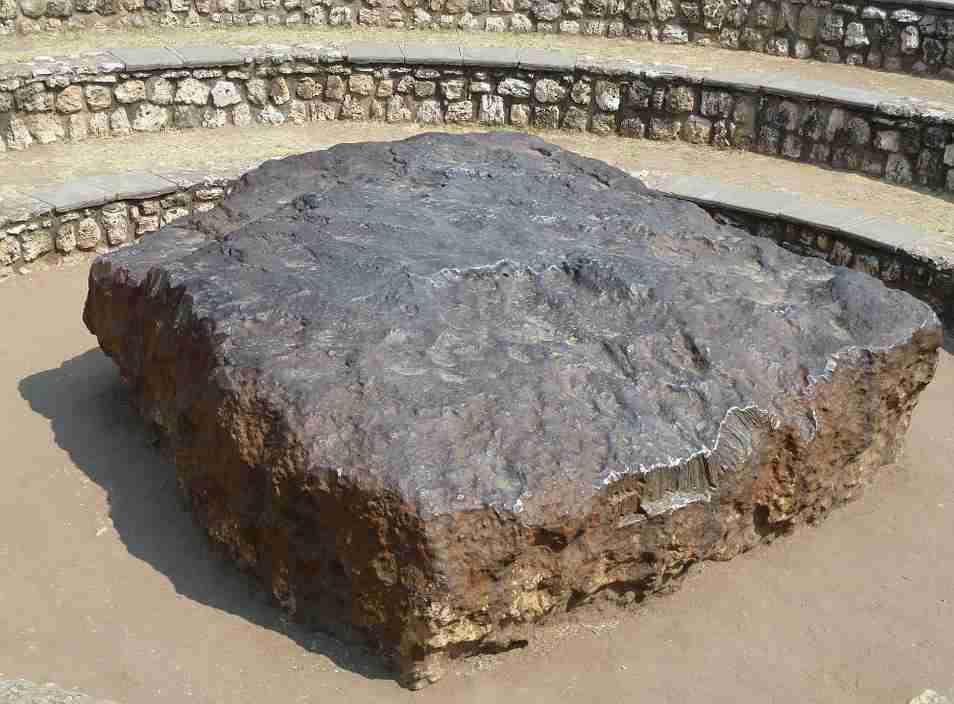It happened in the early years of the 20th century, in a colonial farm in Namibia, south-western Africa. A man, Michael Hanssen, was plowing his fields when the plow hit something very hard. This made a weird metal sound, but neither the farmer nor the men who came for a help succeded in taking that object off the soil. They called geologists and scientists, then, and that is how they understood it was just the top part of a much larger, incredible object: a meteorite! After one century, the Hoba Meteorite still remains the largest mass of iron of unknown origin ever found on planet Earth! This makes a mystery of it, and a wonderful tourist attraction for Namibia.
About Hoba Meteorite
The meteorite found in Hoba, in the Grootfontein region of Namibia, probably fell on Earth 80,000 years ago. It consists of 84% iron and about 16% nickel, plus some cobalt elements too. The surface that cover its nucleus shows deposits of iron hydroxide, which makes a “classic ferrous meteorite” of it, as far as science is concerned. It is classified as an IVB.
The large mass has the shape of a plate of 2.7 x 2.7 m size, 0.9 m thick for a total weight of 66 tons, though reduced because of erosion in ages. It is not sure whether it already had a plate shape – which may have affected its speed in entering the atmosphere . Or if it used to be round shaped but turned flat due to the action of the impact. There is no crater around, so maybe its fall was slowed somehow, or it was just moved by climate events from another place.

Hoba Meteorite and tourism
After the discovery, the government of the region decided to use the information and the site as a tourist attraction. They succeded in protecting the area from vandalism in 1955 and in 1985 they build the circles of stones that still surround the meteorite today. A few years later there were already a information point and tourist facilities all around.
Hoba Meteorite is the main attraction of the town of Grootfontein, a former colonial site founded in 1885 by German and Dutch settlers. You can have your stay in this town and admire its monuments, besides the meteorite’s site. Go visit the Schutztruppe Barracks, now the seat of local History Museum; or enjoy a visit to the old mines; you can also visit the old railway. The name Grootfontein means “hot spring” which refers to spa sites not far from the main town.
The meteorite’s site is four-hour drive away from Namibia’s capital, Windhoek.
How to get there, where to stay
Rent a car and drive yourself from Windhoek to Grootfontein, if you know the territory and do not mind facing a 4-hour long trip. If you prefer, there are regional bus services connecting the capital city to Grootfontein and the Hoba Meteorite’s site.
There is a local airport, in Grootfontein, but it belongs to the Namibian airforce. The distance from Windhoek to the airforce airport can be covered in a 55-minute flight, but not all airplanes are allowed to land there.
As for your stay, there are small hotels and B&B in Grootfontein but you can also find your base right close to the meteorite, at the local “rest camp”.



